|
|
The complexity of the problem requires a broad attack and unique methods and instrumentation, as well as extensive
collaborations among the team members.

|
Laurence Marks
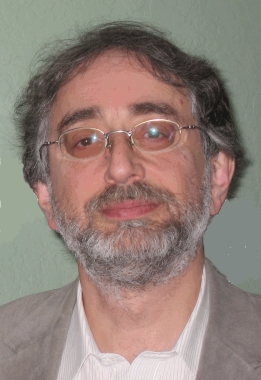 Marks is a Professor of Materials Science and Engineering at Northwestern University. He pioneered the use of HREM to study the
structure of nanoparticles, the use of direct methods for surfaces with either electron or x-ray diffraction data, in-situ methods for tribology inside electron microscopes, fast methods
of obtaining optical and structural measurements from single nanoparticles and most recently a new class of fixed-point algorithms
for DFT calculations. His research interests include transmission electron microscopy, density functional theory methods, direct methods
with diffraction data, surface science particularly of oxides, tribology, hip replacements, corrosion as well as nanoparticle structure,
growth and plasmonic properties.
He is PI and primary point of contact for the MURI project.
Marks is a Professor of Materials Science and Engineering at Northwestern University. He pioneered the use of HREM to study the
structure of nanoparticles, the use of direct methods for surfaces with either electron or x-ray diffraction data, in-situ methods for tribology inside electron microscopes, fast methods
of obtaining optical and structural measurements from single nanoparticles and most recently a new class of fixed-point algorithms
for DFT calculations. His research interests include transmission electron microscopy, density functional theory methods, direct methods
with diffraction data, surface science particularly of oxides, tribology, hip replacements, corrosion as well as nanoparticle structure,
growth and plasmonic properties.
He is PI and primary point of contact for the MURI project.
| |
John Perepezko
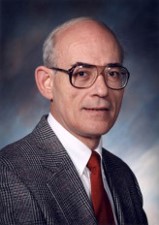 Perepezko is a Professor of Materials Science and Engineering at the University of Wisconsin-Madison.
He has worked extensively in the analysis and modeling of alloy solidification and microstructure
development. This includes the nucleation of phases during interdiffusion and interface
reaction in thin-film multilayers. With this understanding he has developed the concept of a kinetic
bias. Other work involves multiphase microstructures involve examining high-temperature alloys such as
superalloys, titanium aluminide intermetallics and refractory alloys. The examination of phase
stability and reaction kinetics during processing provides a basis for the achievement of tailored
microstructures and alloy designs to enhance performance in structural applications as demonstrated in
advanced Mo-Si-B alloys.
Perepezko is a Professor of Materials Science and Engineering at the University of Wisconsin-Madison.
He has worked extensively in the analysis and modeling of alloy solidification and microstructure
development. This includes the nucleation of phases during interdiffusion and interface
reaction in thin-film multilayers. With this understanding he has developed the concept of a kinetic
bias. Other work involves multiphase microstructures involve examining high-temperature alloys such as
superalloys, titanium aluminide intermetallics and refractory alloys. The examination of phase
stability and reaction kinetics during processing provides a basis for the achievement of tailored
microstructures and alloy designs to enhance performance in structural applications as demonstrated in
advanced Mo-Si-B alloys.
| |
Petra Reinke
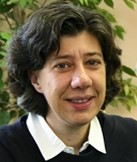 Reinke is a Professor of Materials Science and Engineering at the University of Virginia.
Her research interests are in the area of carbon, semiconductor and metal nanostructures which are
investigated using surface science methods, such as scanning probe microscopy (STM and AFM) and
photoelectron spectroscopy. Nanostructures of interest are clusters, wires or even more complicated
networks, and to study their formation and how they interact with corrosive gases, and the relation between
their geometric and electronic structure and properties.
Reinke is a Professor of Materials Science and Engineering at the University of Virginia.
Her research interests are in the area of carbon, semiconductor and metal nanostructures which are
investigated using surface science methods, such as scanning probe microscopy (STM and AFM) and
photoelectron spectroscopy. Nanostructures of interest are clusters, wires or even more complicated
networks, and to study their formation and how they interact with corrosive gases, and the relation between
their geometric and electronic structure and properties.
| |
James Rondinelli
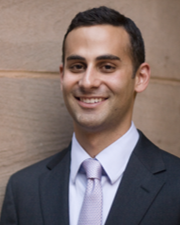 Rondinelli is an Associate Professor of Materials Science and Engineering at Northwestern University.
He uses a combination of first-principles electronic structure methods, symmetry analysis and crystal
chemistry tools to study the fundamental properties of materials at the atomic scale. His group's main
interests are in technologically important energy, electronic, magnetic, and optical materials. Using
multiple level so of theory and computational tools, his group disentangles critical structure-property
relationships required to design and engineer their performance. A primary focus is on multi-property
material optimizations through the identification of new structure-based routes to combine diverse
functionalities into artificial materials. This involves working closely with experimental collaborators
to realize electronic structure-driven materials discoveries.
Rondinelli is an Associate Professor of Materials Science and Engineering at Northwestern University.
He uses a combination of first-principles electronic structure methods, symmetry analysis and crystal
chemistry tools to study the fundamental properties of materials at the atomic scale. His group's main
interests are in technologically important energy, electronic, magnetic, and optical materials. Using
multiple level so of theory and computational tools, his group disentangles critical structure-property
relationships required to design and engineer their performance. A primary focus is on multi-property
material optimizations through the identification of new structure-based routes to combine diverse
functionalities into artificial materials. This involves working closely with experimental collaborators
to realize electronic structure-driven materials discoveries.
| |
John Scully
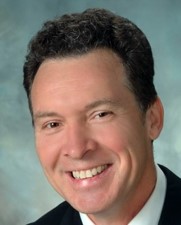 Scully is a Professor of Materials Science and Engineering at the Univeristy of Virginia. His primary research interest
is to understand the relationships between a material's structure and composition and properties
related to environmental degradation. The properties of focused interest and activity are those
associated with hydrogen embrittlement, stress corrosion cracking, localized corrosion, and passivity
of materials. He has worked extensively on advanced aluminum, magnesium, titanium, ferrous and
nickel-based alloys, as well as stainless steels and aluminum-based intermetallic compounds.
A secondary engineering objective is development of methodologies for lifetime prediction engineering
materials in corrosive environments.
Scully is a Professor of Materials Science and Engineering at the Univeristy of Virginia. His primary research interest
is to understand the relationships between a material's structure and composition and properties
related to environmental degradation. The properties of focused interest and activity are those
associated with hydrogen embrittlement, stress corrosion cracking, localized corrosion, and passivity
of materials. He has worked extensively on advanced aluminum, magnesium, titanium, ferrous and
nickel-based alloys, as well as stainless steels and aluminum-based intermetallic compounds.
A secondary engineering objective is development of methodologies for lifetime prediction engineering
materials in corrosive environments.
| |
Peter Voorhees
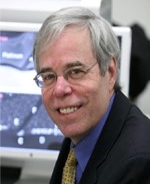 Voorhees is a Professor of Materials Science and Engineering at Northwestern University. He is involved in
research that employs theory, simulation, and experiment in areas from nanotechnology and energy to
four-dimensional microscopy. He has many active projects involving phase field simulations and theory
including semiconductor nanowire
growth, solid oxide fuel cell materials including three-dimensional structure of the
voids and phases in anodes and cathodes. the dynamics of grain growth in materials and
experiments on the coarsening of solid-liquid mixtures on the International Space Station
and the evolution of morphologically complex two-phase mixtures.
Voorhees is a Professor of Materials Science and Engineering at Northwestern University. He is involved in
research that employs theory, simulation, and experiment in areas from nanotechnology and energy to
four-dimensional microscopy. He has many active projects involving phase field simulations and theory
including semiconductor nanowire
growth, solid oxide fuel cell materials including three-dimensional structure of the
voids and phases in anodes and cathodes. the dynamics of grain growth in materials and
experiments on the coarsening of solid-liquid mixtures on the International Space Station
and the evolution of morphologically complex two-phase mixtures.
| |
|

|
 The Research Team
The Research Team
 The Research Team
The Research Team
